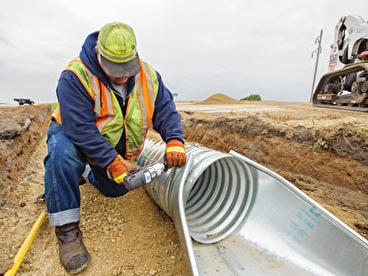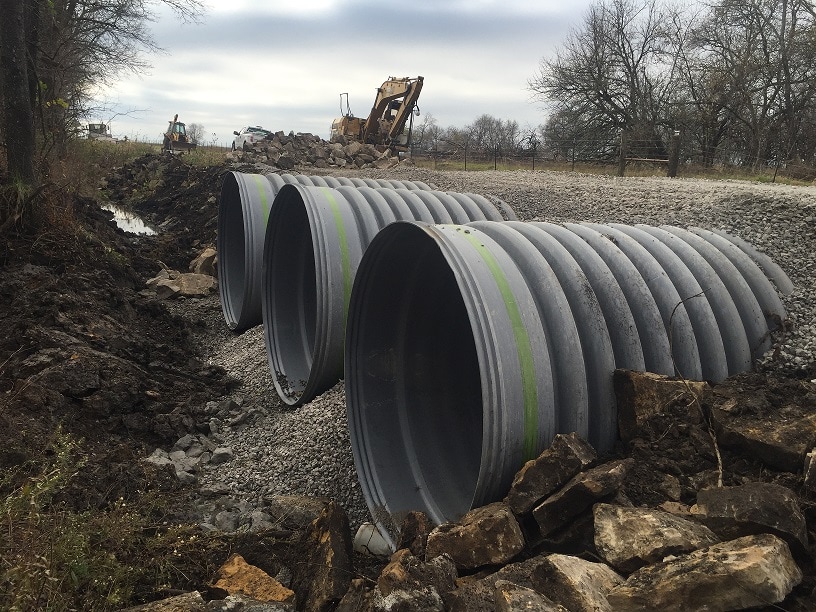Quality Road Construction for Long-Lasting Roads
Quality Road Construction for Long-Lasting Roads
Blog Article
Attain Success With Culvert Installation: Finest Practices Exposed
Setting up culverts is a crucial element of facilities development, needing precision and adherence to finest methods for long-term success. Whether taking on a new project or preserving existing culverts, the process demands meticulous attention to detail. From the first material option to the lasts of upkeep, each action plays an essential role in the functionality and long life of the culvert system. In this discussion, we will certainly discover necessary techniques, tips, and guidelines that can considerably affect the end result of culvert installments. Understanding these vital variables is paramount in ensuring the structural honesty and effectiveness of culverts, making it imperative for specialists and lovers alike to understand these foundational principles.
Correct Product Choice

Concrete culverts are known for their stamina and toughness, making them ideal for rush hour areas and large water flow quantities. Corrugated metal culverts are lightweight and very easy to install, suitable for temporary applications or situations requiring a fast service. Plastic culverts are light-weight, corrosion-resistant, and affordable, making them a popular choice for various culvert setups. Compound materials supply a combination of residential or commercial properties from different products, providing a personalized service for certain job requirements. Ultimately, selecting the proper product is essential to make certain the culvert system works successfully and has a lengthy service life.
Site Prep Work Tips
Efficient website preparation is necessary for the effective installation of culverts, making certain proper assimilation with the surrounding environment and lasting performance. Before beginning the installment procedure, it is vital to carry out a complete website evaluation to determine the suitable size, type, and placement of the culvert.
Next, the dirt problems need to be assessed to evaluate the stability and load-bearing capability of the ground. Relying on the dirt kind, additional actions such as compaction or reinforcement might be required to avoid clearing up or shifting of the culvert over time. Correct drain factors to consider should this hyperlink likewise be taken right into account to protect against water buildup around the culvert, which can lead to erosion or architectural damage.
Lastly, establishing correct accessibility to the website for building devices and making sure conformity with any regulatory needs are vital elements of website preparation. By following these site prep work pointers, the installment of culverts can be accomplished effectively and properly, promoting the durability and capability of the culvert system.
Installation Methods

To start with, it is necessary to accurately determine and mark the location where the culvert will be installed. This makes certain correct alignment and avoids any errors during the installation phase. Excavation must be done carefully to develop a steady structure for the culvert. The trench must be dug to the proper deepness and size, taking into consideration the dimension and kind of culvert being set up.
Next, the culvert must be put in the trench following the maker's standards. Appropriate positioning is crucial for the functionality and longevity of the culvert. Backfilling the trench with the suitable material and compacting it in layers is the last step in the installment procedure. This makes certain the culvert is firmly in area and prepared to endure the demands it will deal with. By complying with these installation techniques carefully, the culvert will certainly be effectively set up, contributing to the overall success of the project.
Maintenance Standards
After completing the cautious setup of culverts complying with proper techniques, adherence to maintenance guidelines is extremely important to ensure their long life and functionality. Evaluations must consist of inspecting for sediment accumulation, disintegration around the culvert sides, and any type of indications of corrosion or rust.
Additionally, maintaining proper slope and alignment of the culvert is vital for efficient water flow and to avoid prospective clogging. Road construction. Any type of plants near the culvert should be taken care of to avoid origin breach and clogs. In areas prone to freezing temperatures, applying winter months upkeep practices such as making certain correct drainage to stop ice build-up is critical
Routine upkeep not just extends the life-span of culverts yet also guarantees they function successfully in handling water flow, minimizing the risk of damages to infrastructure and bordering locations.
Troubleshooting Common Issues
Addressing typical problems that might emerge with culverts requires a systematic look at more info strategy and careful analysis of the underlying reasons. By inspecting the culvert positioning and slope frequently, possible concerns can be determined and fixed promptly.

Verdict
To conclude, achieving success with culvert setup needs careful consideration of material option, comprehensive site prep work, proper installation methods, and regular upkeep. By complying with ideal methods and repairing common problems, the stability and functionality of culverts can be ensured. It is important to stick to standards and referrals to stop any kind of possible concerns and make sure the long life of the culvert system.
Report this page